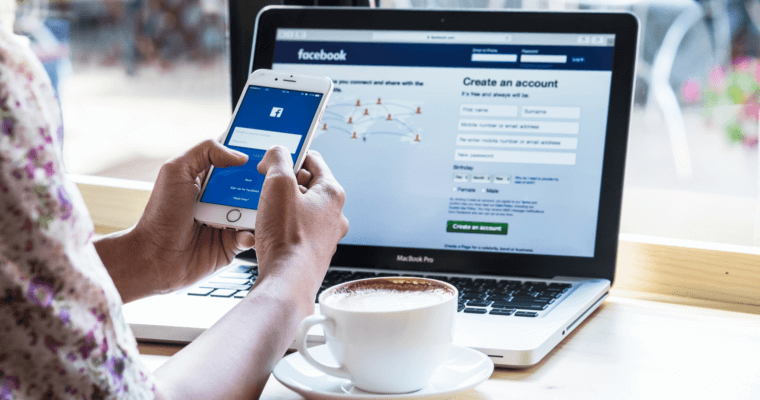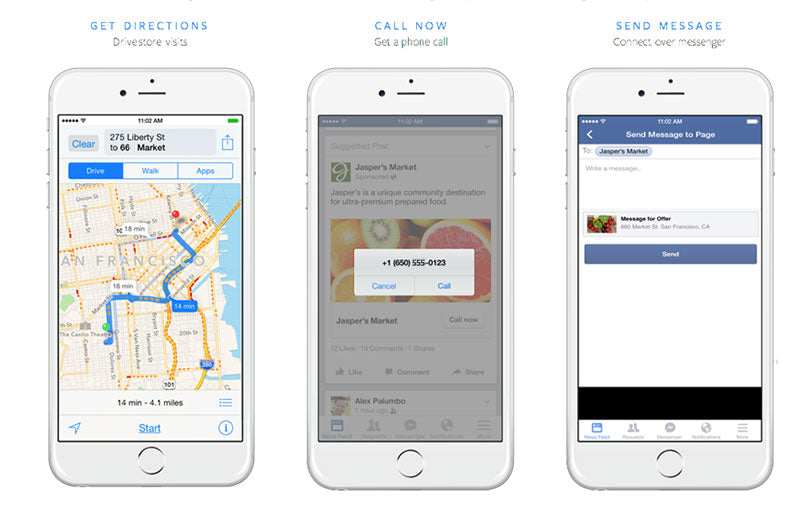Continue with some methods to drive more holiday sales with Facebook ads…
8. Create and Test Dynamic Product Adverts
The key weapon of every e-commerce advertiser is Dynamic Product Adverts.
Facebook dynamically generates adverts based on actions people take on your site.
How good are they? Point It Digital Marketing compared Dynamic Product Adverts versus regular remarketing adverts. The outcomes?
- 44% increase in click-through-rates
- 77% lower cost-per-click
- 74% lower cost-per-action
Setting up Dynamic Product Adverts could be simple, however more advanced customization could require a developer.
Create and Upload a Product Catalogue
Listing your product attributes in an XML or CSV file. These attributes auto-populate each a part of your advert, like name, landing page URL and image URL.
You must add this through your Business Manager account.
When you use Shopify, you may set up your product feed utilizing the Facebook Product Feed app.
Setup Your Pixel
You’ll need to modify your pixel to report product IDs, and different pixel events like product views, added to cart and bought.
Use Fb’s developers guide to install the pixel correctly. It’s even easier if you’re using Shopify.
Setup a Dynamic Advert Template
You should create a dynamic advert template to generate each advert. You could use multi-product or single product in the Newsfeed or Right-Hand column.
Run the Campaign
Setup your campaign and begin running it!
Strategies for Dynamic Product Adverts
We suggest utilizing November to test Dynamic Product Adverts to see what works.
Offered your website gets enough traffic, you should check out the following advert set campaigns:
- View merchandise, however no buy
- Clicked on email product, however no buy
- Added to cart, however no buy
- Cross-sell to past clients who match certain interests
- Up-sell to recent consumers who visited your site again
- Sales and promotions
? Tip: Setup and test Dynamic Product Adverts and use your findings for holiday campaigns.
9. Setup Offline Conversion Tracking
Offline conversion tracking enables you to track any offline conversions, like in-store sales or leads, that occurred because of a Facebook advert.
That is incredibly helpful for small enterprise advertisers who rely on physical in-store sales, however, want to track ROI from Fb promoting campaigns.
Setting Up Offline Conversions
You’ll need three things to set up offline conversion tracking:
- An offline data file or API connection
- Adverts Account
- Business Manager
Next, you’ll have to create an event in Business Manager.
Go to Business Settings and choose Offline Event Sales.
Name your offline event and the description.
Then select the Offline Event and add the corresponding data and follow the instructions.
Tracking Conversions for Offline Events
You may choose offline conversion tracking in the Tracking part of your advert set.
Choose Offline Events Tracking and choose your offline event.
View Offline Conversion Outcomes
To see your offline conversion outcomes, go to the Adverts Manager and choose Columns and Customize Columns.
Then select any of the Offline conversions you wish to track.
? Tip: Setup offline conversion tracking to know how your campaigns contribute to offline purchases.
10. Optimize Your Mobile Experience
Many advertisers, particularly giant retail brands, don’t differentiate mobile or desktop targeting. Everything is lumped together into one advert targeting group, although mobile and desktop experiences could be different.
Analysis data exhibits how necessary mobile is to holiday purchasing:
- 4.2X more often that people access Facebook on mobile phones before the holiday shopping
- Shoppers in 2016 are for the first time expected to utilize mobile more than desktop for holiday shopping
- 56 percent of in-store sales were influenced by mobile activity
- One study displayed that 38% say they won’t return to a retailer’s website if it’s not mobile optimized
With all this in mind, how could you benefit from increased mobile usage?
Ensure that your website is optimized for mobile. When you’re utilizing Shopify, your site is already designed to work on any device.
Test and optimize mobile campaigns. Understand what merchandise drive mobile purchases or in-store visits, and apply these findings during the holidays.
Construct a profitable mobile campaign. By making a profitable campaign early, Facebook will know your audience. This saves you cash during the holidays as Facebook already knows your audience.
Construct mobile retargeting traffic. Setup a marketing campaign to target only mobile devices.
By constructing a retargeting pool early, you may reach mobile customers during the holidays at a lower cost than your competitors.
Sell your merchandise on Facebook. Arrange a Shop Section on your Facebook page or add the Messenger channel to benefit from an optimal mobile experience.
? Tip: Optimize your sales experience for mobile right now or miss out down the road.
11. Experiment with Event Worth Targeting
Facebook’s latest viewers concentrating on tool lets advertisers target audiences by the value of a Facebook event.
In preparation for the holidays, you need to experiment with the following audience teams:
Up-sells on low purchase-value audiences
Up-sells on particular products or product themes
Clients who used iOS devices
Make sure you experiment with these audiences beforehand to see if they’re value targeting during the holidays.
? Tip: Use advanced custom audiences to see if targeting by buy data increases sales.
12. Test Local Awareness Campaigns
In September 2016, Google commissioned a research on mobile device usage and shopping:
- 87% of people within the study visited a retailer’s site or app on their smartphone
- 61% of people visit a retailer’s app or site before buying
Clients additionally engage on their mobile devices inside a retailer. An Enterprise Insider study discovered that 70% of store shoppers use their mobile device in-store every single time or regularly
You should prepare for in-store visits. The best way to do that is by experimenting and testing Facebook in-store traffic campaigns.
Local Awareness Setup
Utilizing this campaign is simple. Just choose the Local Awareness goal and you’ll be given a 1-mile radius around your store.
Utilizing this goal has it’s advantages:
Context particular map cards. This shares locally relevant details with your viewers, like a map pin, distance to enterprise and hours of operation
Store-visit call-to-action buttons. You could use Get Directions, Call Now, Learn More and Send Message call to action buttons.
? Tip: Experiment with location-based marketing campaigns before key holiday dates and use the info as a fee benchmark.
13. Get Access to Offline Purchase Objectives
Businesses with multiple business locations need to use the Store visit objective.
Right here’s why you need to use this campaign objective:
- Location-contextual info for each enterprise location
- Proximity-based advert content
- Proximity-based maps
- Set boundaries based on population density
To use this objective, you’ll want locations enabled. Do that by contacting Facebook, and following the directions.
Setting up and testing store performance will make sure you spend money on top-performing locations, rather than waste money during the holidays.
? Tip: When you own multiple stores, contact Fb to setup Fb locations.
14. Review Breakdowns to Determine Most Valuable Audiences
Understanding use Facebook breakdown data is essential to increase leads and sales. By analyzing breakdown data like platform or device, you may see what viewers segments perform the best. We’ll utilize our Instagram Advertising Guide as an example.
Platform
We tested 4 different platforms:
- Fb Mobile Newsfeed
- Fb Desktop Newsfeed
- Fb Right Hand Column
In this case, mobile devices performed best.
Device Impression
Our data displays that Android Smartphones and iPhone were the main devices people used.
Platform
This breakdown displays outcomes based on the platform.
In our campaign, we tested Fb and Instagram. Fb unsurprisingly was the best performer.
Country
The best nation was Indonesia, followed by the United States and Turkey.
Age
Unsurprisingly, young people have been most excited about our Instagram Guide.
Utilizing Breakdowns is an incredibly highly effective method to understand your viewers.
Make sure you test wider audiences throughout November. It will guarantee you have enough data to make an informed decision over the key holidays.
Based on our data, we’d break out 18-24 audiences who use mobile devices and enhance our bids and daily budgets. That method we’re bidding on more profitable audiences
? Tip: Determine most profitable viewers segments before key holidays.


















